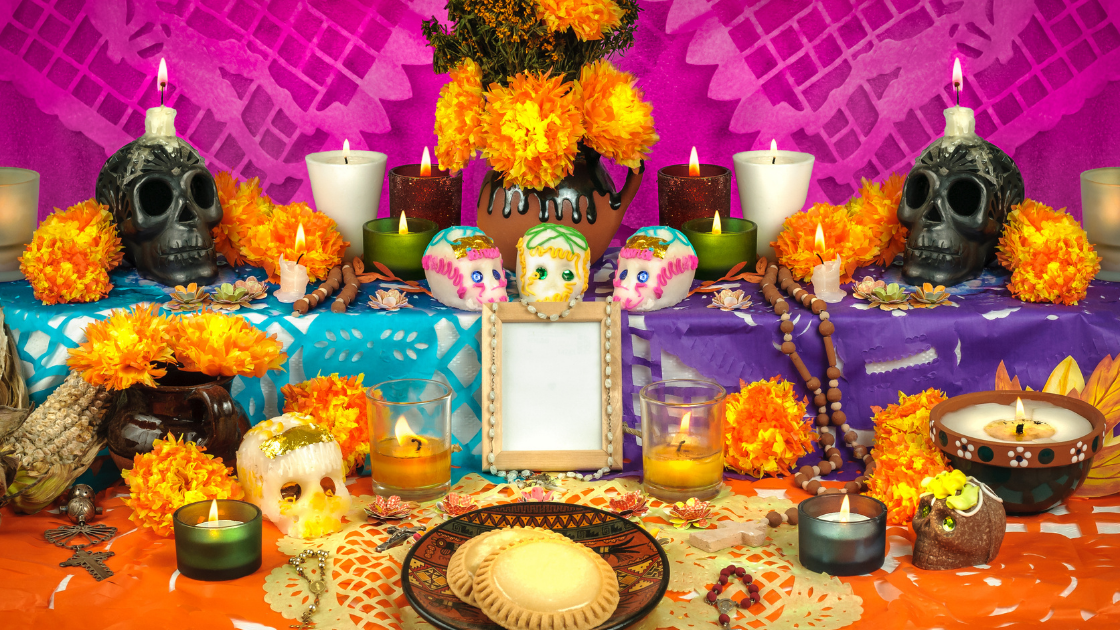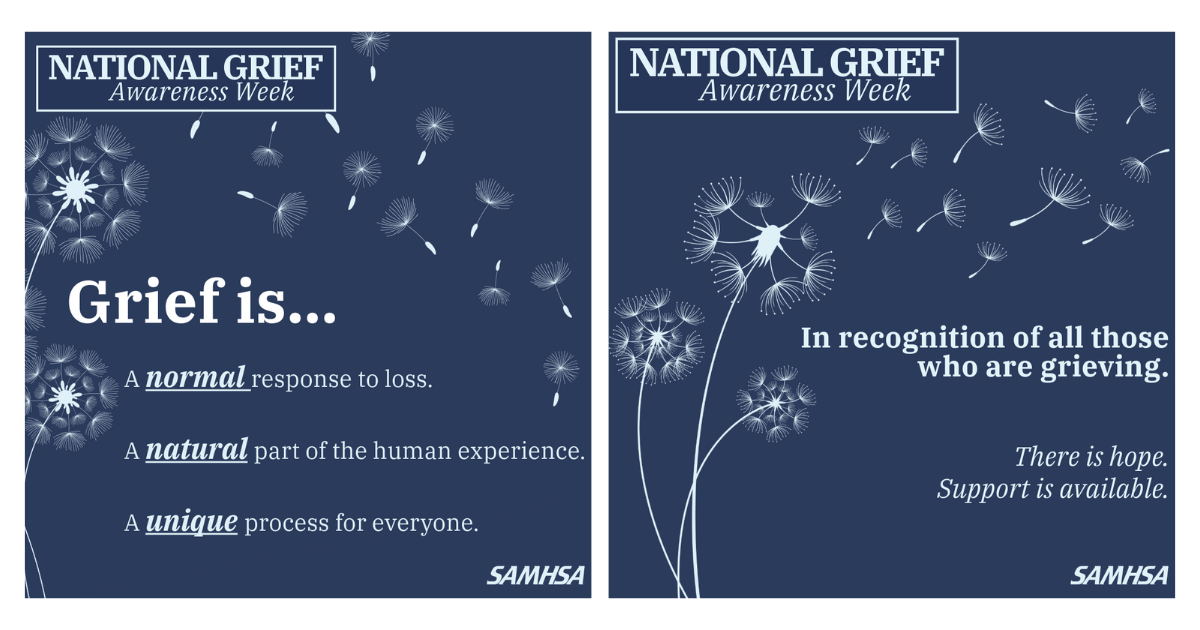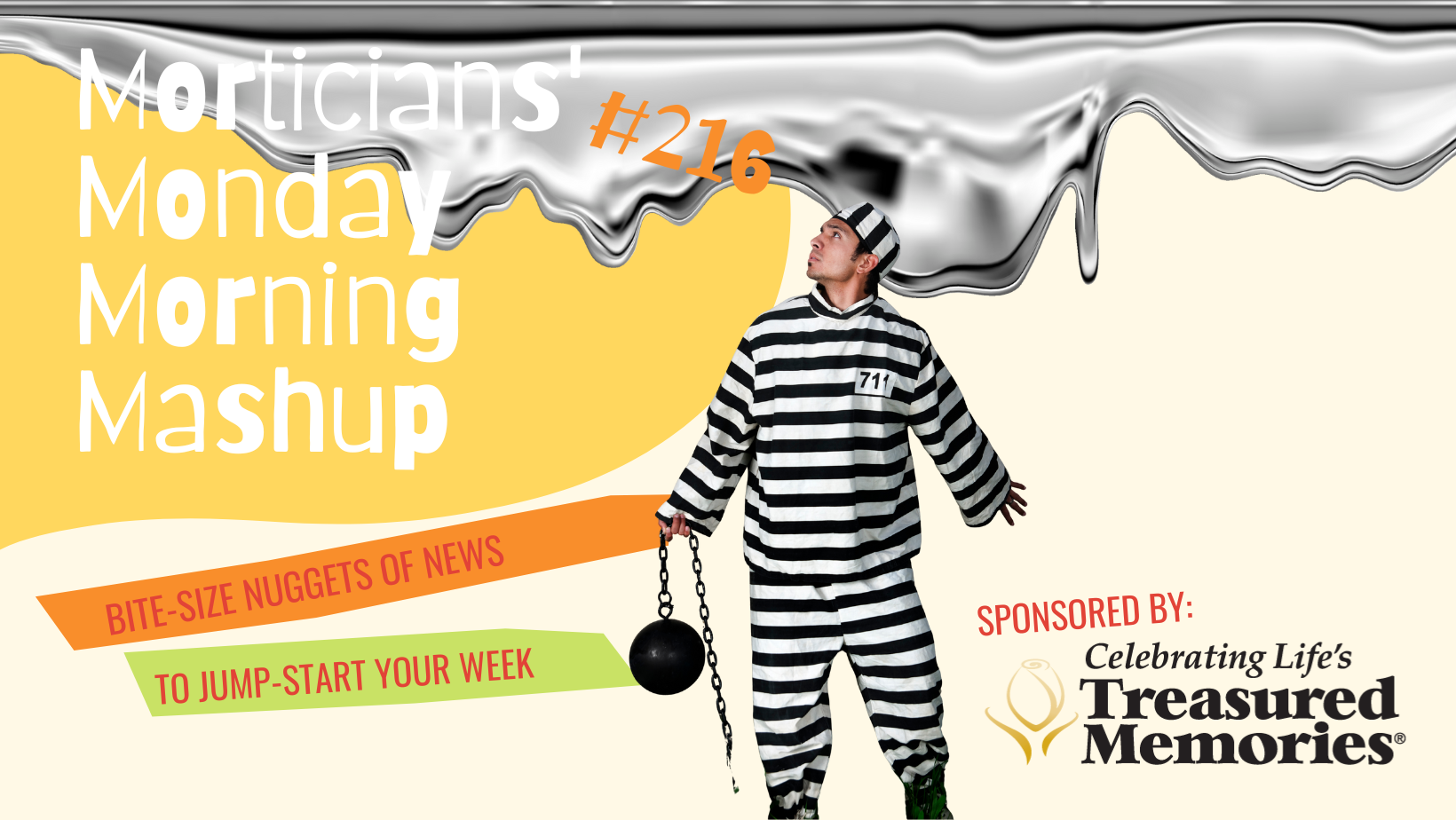Day of the Dead: Todos Somos Calaveras (“We Are All Skeletons”)
Every year around this time, they start showing up. The elaborate skulls are instantly recognizable: gaping black eyeholes, mouth sliced ear to ear, maybe stitched back together; festooned with jewels and flourishes, extra teeth, lots of color, rose tiaras – the Calavera Catrina, icon of Day of the Dead.
O, Death…
The thematic fanfare of the Día de los Muertos is unlike anything else. Death-focused only in its purpose to remember those who are dead, this is not a somber, maudlin event. The festival is rich with vivid celebration, held annually as November begins to welcome the departed briefly back to the world of the living. All aspects of the celebration reinforce joy of life.
Ofrendas (altars) hold food and water for the visiting deceased in structures built in their honor, the most elaborate of which resemble works of art. Typically strewn with Cempasúchiles (marigolds), the festival’s ubiquitous flower, ofrendas may be stacked with pan de muerto, a sweet type of bread often decorated with bones and tears of dough; sugar skulls, pressed in molds and brilliantly decorated, all sizes; sweet pulque, fermented from agave; atole, a sort of warm corn-flour porridge, and hot chocolate… comforts and delectable as much for the living as for the dead.
Mardi Gras for the Dearly Departed
While it’s common to see local celebrations of Day of the Dead in the US, particularly in the southwest, the celebration’s origins are with the indigenous population of Mexico. UNESCO recognizes the celebration as a culturally significant artifact. While there are similar events around this time of year elsewhere in the world, Day of the Dead is widely celebrated a little differently in every place that embraces the tradition, even in its native Mexico.
Despite the season, the overall effect is more “Mardis Gras” than “scary hayride,” both in the run-up and extravagance of execution. The modern iteration of Day of the Dead generally bookends somewhere around the vicinity of November 1 (All Saint’s Day) and second (All Soul’s Day), depending largely on where you celebrate. The original event took place in the summer but changed following the Spanish colonization of Mexico, to coincide with Catholic All Saint’s Day. Despite the placement, Día de los Muertos is in no way related to American Halloween (which is itself an offshoot of Samhain, a Celtic tradition).
Still a party, by any name.
Different in Different Places
Location, as they say, is everything. Regional flavors and nuances inform the observational practices of Day of the Dead everywhere, particularly south of the border. And in the birthplace of José Guadalupe Posada—he of the original fancy skeleton lithograph that started it all with a personification of death in fancy French garb named the Calavera Garbancera–140 miles north of Guadalajara, Aguascalientes, the doings stretch to nearly a week. From Festival de Calaveras (Festival of Skulls), they culminate in a grand parade of skulls along Avenida Madero. Styles and customs vary by region; other areas are known for traditions of complex patterned sawdust rugs, processions with bells and candles, and cemetery visitations and vigils.
Bring It
One might say that having a holiday based on death—effectively death’s own season, even—was ahead of its time, what with trendy subcultures and the recent cultural thrust toward icon-ifying just about anything, new holidays granted willy-nilly to something or other every time we turn around.
But this larger-than-life-sized celebration, so flamboyantly high-volume, is a worthwhile study in contrasts. Who couldn’t do with a little more celebration of life, especially now? Maybe at base we’re all a pile of grubby bones, underneath it all; why shouldn’t we do rose tiaras?
Bring on the calavera garbancera.




